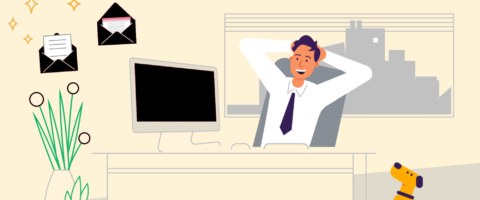Blogs & ideas
How And Why To Best Segment Your Audience

By Tim Holt 3 min read

- Segmentation is one of the foundations of effective Targeting.
- Targeting is essential to ensure relevant Campaigns.
- Campaign responses create leads for Nurturing.
- Nurtured leads turn into sales and Happy Customers.
- Happy customers provide repeat business.
Sounds simple doesn't it?
Now I realise the above boils things down to the very basics. But the fact remains that segmentation can truly improve your marketing and lead to an improved return on investment.
So how do we segment data for the best possible results?
Ultimately, you simply want to define strategies to target like-minded groups of customers. This may be with most appropriate messages, products and promotions, or just by identifying the best time or best channel to communicate with that group.
Ways to segment
There is a multitude of ways to segment your audience data, and there will be extras that are specific to your industry or even your particular business. Some that are widely used include:
- Geography - segmenting your audience by their postcode, county, or other geographic factor. This is useful if you are promoting a local business, regional events or in many other instances.
- Age - your different products or services may be better suited to different age groups; so being specific with your messages for each group will help improve campaign returns.
- Gender - as with age, your entire range or individual products may be more suited to a particular sex.
- Industry/Sector - it may be that your products are designed for a particular business sector, or just that you want to expand into and target different industries to establish suitability.
- Job Role - With B2B marketing there may be a few specific Job Roles you know you need to target, but the messages for each may need to be subtly or wildly different (i.e. targeting a Finance Manager with ‘Save Money’ messages but the IT Manager with ‘Top Software’ promotions for the same product).
- Hobbies / Interests - Segmenting by factors focused around the person’s interests will allow you to ensure relevant promotions or content related to those topics.
- Order History / Purchase Frequency & Value - Your data may show that some clients order low volumes or low value items monthly, whereas others order high-end products every 4-6 months. Segmenting these groups will allow you to target appropriate value and types of products.
- Stage of Customer Journey or Sales Cycle - Using data on where groups sit in the buying process will enable you to target introduction, cross-selling, up-selling and ongoing engagement messages more effectively. Marketing Automation can also help enhance these aspects.
Segmenting your customer and prospect data into various groups based on all or some of the above is the first step in truly engaging with your audience on an individual basis. Marketing Automation packages can help you to take this one step further by feeding response data into the mix.
Patterns can be established around when, where and by what method recipients want to receive communications from your company. This information can be combined with the segmentation described above to truly communicate with your customer and prospect data on a one-to-one basis.
Improve customer relationships
By segmenting your data and using this to better target communications - you will improve your relationship with your customers.
Sure, most customers understand how marketing and data works now - certainly in B2B and more and more so within B2C.
But does this mean we don't appreciate personalised and relevant communications? Of course not - in some cases we appreciate it more, because we know the effort has been made by the company to be relevant to us as individuals.
As customers, we appreciate being shown things we are interested in - segmentation makes this possible. A Single Customer View (SCV) and Marketing Automation makes it even better!
Related blogs and ideas
Explore more ideas
Let us open your mind to new possibilities
Our stories and ideas direct to your inbox





